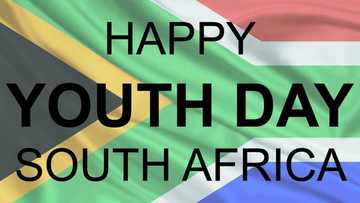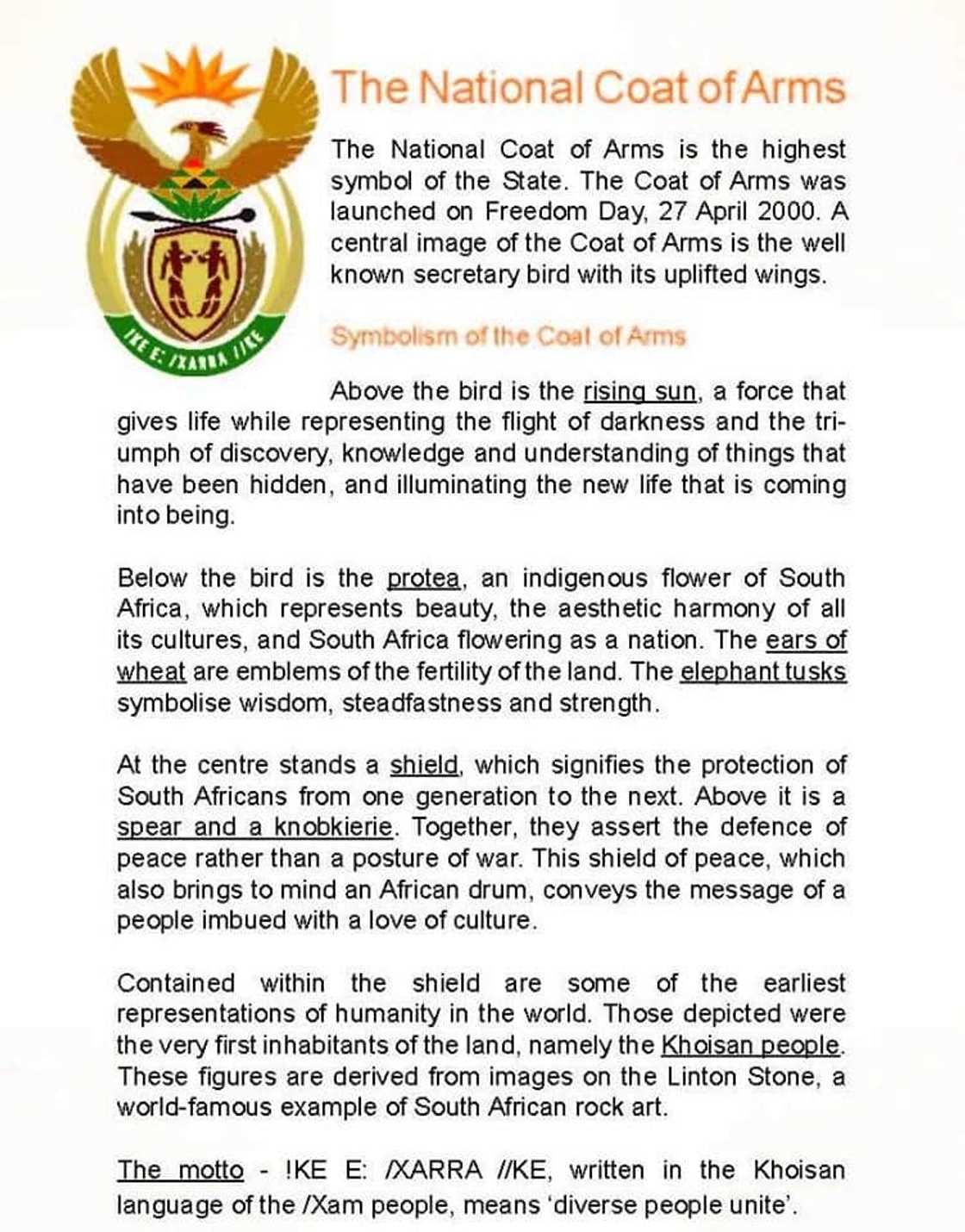Every country has a symbol that unites its citizens, regardless of their background or social differences.
The emblem also plays a significant role in providing citizens with a sense of belonging.
The South African coat of arms is an example of a symbol of national unity.

Image: wikimedia.orgSource: Original
Each of the symbols in the coat of arms, however small, has a significance.
The South African coat of arms is the most common symbol of national unity.
The National Coat of Arms is found in relevant documents like the birth certificates and passports.

Read also
Explained below are the symbols of the National Coat of Arms and their significance.
Most countries have symbols that symbolise national unity.
These symbols are found in most of the documents and currency.

Image: facebook.com, @SouthAfricanEmbassyJapanSource: UGC
The essence of these symbols is that they emphasise on the value of the citizens to the country.
They also make the citizens valued.
For instance, these are the national symbols of South Africa.

Read also
The coat of arms South Africa is the most common symbol of national unity.
The South African is found in nearly all the essential documents.
These documents include birth certificates, marriage certificates, school certificates, death certificates, and passports.

Read also
It is also found in South African currency, even in the coin with the least value.
It also emphasizes the sense of belonging for the citizens in the country.
The National Coat of Arms of South Africa was launched on the 27th of April, 2000.

Read also
The launch signified a change in the government.
The difference in the government was manifested in the democratic form of leadership.
It also brought forth a new jot down of patriotism.

Read also
It is also the most common symbol of national unity.
This is so because it is found in most of the federal documents.
That means that the government has approved it.
It is in the Xhoisan language of the /Xam subgroup.
Those words mean; diverse people unite.'
It also acts as a vessel for the display of identity.
Elephant Tusks
The elephants in the South African coat of arms are also symbolic.
They signify eternity, strength, wisdom and moderation.
The ears of wheat
The ears of wheat are a symbol to emphasize the country’s fertility.
The ears of wheat are also a representation of the country’s vibrant agricultural sector.
The spear and knobkierie
The spear and knobkierie have two significant meanings.
They are a symbol of authority and defense.
They also represent the strong legs of the secretary bird.
The image of the spear and knobkierie placed down signifies peace.
The secretary bird on the South African coat of arms can be likened to a lion on earth.
The spear and knobkierie symbolize the strong legs of the bird.
The birds normal nature of hunting for snakes is significant too.
It brings out the aspect of protecting the country from its adversaries.
Since the secretary bird flies, it also symbolizes a messenger that carries divine majesty.
The birds lifted wings represent the nations potential for growth.
It also signifies the bird offering protection to the country.
The human figures in rock art are portrayed in the form of greetings, which symbolize unity.
They also represent the growth of the sense of belonging in the country and collective humanity.
The protea images are normally seen below the secretary bird.
Protea pictures represent flowers which are also a symbol of national unity.
The light signifies the promise of good reflection, rebirth, willpower, sound judgment, and knowledge.
It also symbolizes the wholeness of humanity and the source of light and life.
Its change in the system of governance is a part of the advantages that came with freedom.
The South African coat of arms is a symbol of this.
She graduated from Meru University of Science and Technology with a Bachelor of Technology in Civil Engineering in 2019.
In 2023, Priscillah finished the AFP course on Digital Investigation Techniques.
She has been writing articles on Briefly.co.za since 2019.
Email: pshmueni@gmail.com